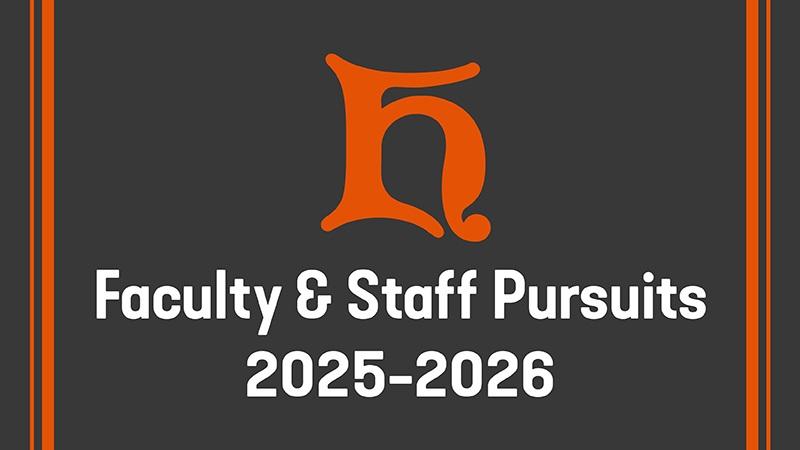NCWQR a key player in algal bloom forecasting
Dr. Laura Johnson, director of Heidelberg's NCWQR, was one of the partner scientists, researchers and educators who shared data Thursday as part of the annual prediction of the seriousness of the Harmful Algal Bloom (HAB) on western Lake Erie this summer.
The experts – all research partners of NOAA – presented their findings during a webinar at Stone Lab. They are forecasting a moderate summer harmful algal bloom, based on a drier spring that should lead to a smaller nutrient load than last year.
This year’s bloom is expected to measure 4.5 on the severity index – among the smaller blooms since 2011 – but could possibly range between 4 and 5.5, compared to 7.3 last year, according to a NOAA news release. An index above 5 indicates the more severe blooms.
In 2014, when Lake Erie experienced the severe algal bloom that threatened the Toledo water supply, the NCWQR was a key player in providing expertise and data to help understand the issue. According to Laura, lab data indicates that the increase in dissolved phosphorus from the Maumee River since the mid-1990s corresponds to the return of harmful algal blooms in western Lake Erie that started in the early 2000s.
The lab frequently shares its data and contributes to the Lake Erie HAB forecast and bulletin. The bulletin relies on the lab’s data linking spring phosphorus loads from the Maumee River to bloom size in Lake Erie.
This year’s forecast may be good news for the region.
“A smaller bloom forecast for Lake Erie and the surrounding coastal communities is encouraging, but we cannot be complacent,” said Nicole LeBoeuf, acting director of NOAA’s National Ocean Service. “It is our hope that these science-based tools will help local leaders plan for the predicted bloom and best position the community and its visitors to deal with what comes."
The size of a bloom isn’t necessarily an indication of how toxic it is. For example, the toxins in a large bloom may not be as concentrated as in a smaller bloom. Each algal bloom is unique in terms of size, toxicity and ultimately its impact on local communities. NOAA is actively developing tools to detect and predict how toxic blooms will be.
“The expectation of a smaller bloom than 2019 is clearly something we should welcome. Nevertheless, we still have work to do.” said Christopher Winslow, Ph.D., director of Ohio Sea Grant and Stone Laboratory. “Thankfully, the support of Governor DeWine to address water quality issues through the H2Ohio initiative and the research being funded through the Ohio Department of Higher Education’s Harmful Algal Bloom Research Initiative are important parts of that work. Additionally, we are fortunate that Ohio has capitalized on productive working relationships between our state agencies and our research institutions. Addressing nutrient loading and harmful algal blooms clearly demands an ‘all-hands-on-deck’ approach.”
The Lake Erie forecast is part of a NOAA ecological forecasting initiative that aims to deliver accurate, relevant, timely and reliable ecological forecasts directly to coastal resource managers and the public. In addition to the early season projections from NOAA and its partners, NOAA also issues HAB forecasts during the bloom season. These forecasts provide the current extent and 5-day outlooks of where the bloom will travel and what concentrations are likely to be seen, allowing managers to determine whether to take preventative actions.
“The mild rainfall this spring compared to last year will lead to a much smaller bloom,” said Richard Stumpf, Ph.D., NOAA’s National Centers for Coastal Ocean Science’s lead scientist for the seasonal Lake Erie bloom forecast. “While the bloom this year probably will not be as mild as in 2018, we still expect to see large areas without substantial effects. This depends on where the bloom gets pushed by the wind, so anyone using the lake needs to regularly check the location of the bloom.”
Nutrient load data for the forecasts came from Heidelberg University. The various forecast models are run by NOAA’s NCCOS, the University of Michigan, North Carolina State University, LimnoTech, Stanford University, and the Carnegie Institution for Science. Field observations used for monitoring and modeling are done in partnership with a number of NOAA services, including its Ohio River Forecast Center, National Centers for Coastal Ocean Science, Center for Operational Oceanographic Products and Services, Great Lakes Environmental Research Laboratory, and Cooperative Institute for Great Lakes Research, as well as Ohio Sea Grant and Stone Laboratory at The Ohio State University, University of Toledo and Ohio EPA.




